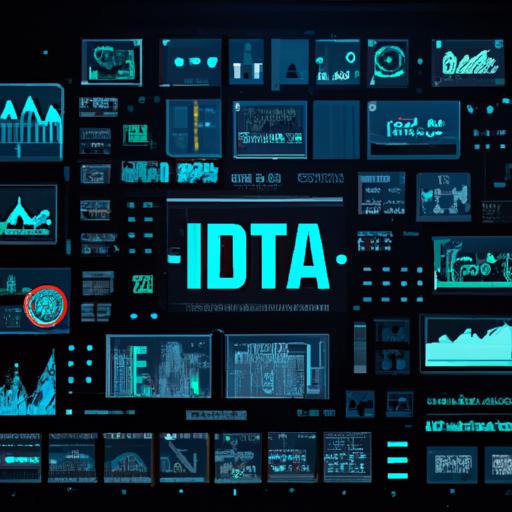Introduction
In today’s fast-paced digital landscape, the sheer volume of data generated by businesses can be overwhelming. This is where big data reporting tools come into play, offering a comprehensive solution to analyze, interpret, and visualize massive datasets. But what exactly are big data reporting tools?
Big data reporting tools encompass a set of software applications designed to streamline the process of data analysis and reporting. These tools enable businesses to extract valuable insights from complex data sets, empowering them to make informed decisions and drive growth. In an era where data is king, the use of big data reporting tools has become indispensable for organizations looking to stay ahead of the competition. Let’s delve deeper into the significance of utilizing these tools in today’s data-driven world.
As businesses continue to amass vast amounts of data, the ability to harness this data effectively has become a competitive advantage. Big data reporting tools provide a structured approach to data analysis, allowing organizations to uncover hidden patterns, trends, and correlations within their data. By leveraging these insights, businesses can optimize operations, enhance customer experiences, and drive strategic decision-making. In essence, big data reporting tools serve as a powerful ally in navigating the complexities of modern data analytics.
Benefits of Big Data Reporting Tools
Increased Data Accuracy and Reliability
Big data reporting tools play a crucial role in ensuring data accuracy and reliability for businesses. By automating the data collection and reporting process, these tools minimize the risk of human error and inconsistencies in data analysis. With real-time data integration and validation features, organizations can trust the integrity of their data, leading to more informed decision-making and strategic planning.
Improved Decision-Making Processes
One of the key advantages of big data reporting tools is their ability to enhance decision-making processes within organizations. By consolidating and visualizing large volumes of data in a user-friendly format, these tools enable stakeholders to quickly identify trends, patterns, and outliers. This accelerated data analysis empowers decision-makers to respond swiftly to market changes, customer demands, and internal performance metrics, ultimately driving business growth and competitiveness.
Enhanced Data Visualization Capabilities
In today’s data-driven landscape, the ability to effectively communicate insights is paramount. Big data reporting tools excel in transforming complex data sets into visually compelling reports, charts, and dashboards. Through intuitive visualization features, users can easily interpret and share data-driven insights with colleagues, clients, and stakeholders. This visual storytelling not only enhances data comprehension but also fosters collaboration and alignment across teams, leading to more impactful decision-making and business outcomes.
Top Big Data Reporting Tools in the Market
Tableau
Tableau is a widely recognized data visualization tool that allows users to create interactive and shareable dashboards. With its user-friendly interface and robust features, Tableau empowers users to explore data, uncover insights, and present findings in a visually appealing format.
Power BI
Microsoft’s Power BI is another leading big data reporting tool known for its seamless integration with various data sources and intuitive dashboard creation capabilities. Power BI offers advanced analytics features, AI-driven insights, and real-time data visualization, making it a popular choice among businesses of all sizes.
Google Data Studio
Google Data Studio is a free tool that enables users to create dynamic and interactive reports and dashboards using data from multiple sources. With its drag-and-drop interface and customizable visualization options, Google Data Studio simplifies the process of data analysis and reporting for both beginners and experienced users.
QlikView
QlikView is a business intelligence tool that provides powerful data visualization and exploration functionalities. With its associative data model and in-memory processing capabilities, QlikView enables users to analyze large datasets quickly and derive actionable insights to drive business growth.
Domo
Domo is a cloud-based data visualization platform that offers advanced analytics, collaboration tools, and real-time data monitoring capabilities. Domo’s intuitive interface and customizable dashboards make it a preferred choice for businesses looking to streamline their data analysis processes and drive data-driven decision-making.
Sisense
Sisense is a robust business intelligence software that enables users to easily prepare, analyze, and visualize complex data sets. With its AI-powered analytics engine and embedded analytics capabilities, Sisense helps organizations extract valuable insights from their data and drive strategic decision-making.
Key Features to Look for in Big Data Reporting Tools
Data Integration Capabilities
One of the crucial aspects to consider when choosing a big data reporting tool is its data integration capabilities. The tool should have the ability to seamlessly connect to various data sources, such as databases, cloud storage, and APIs. This ensures that all relevant data can be accessed and analyzed within the reporting tool, providing a comprehensive view of the organization’s data landscape.
Customization Options
Customization options play a significant role in tailoring the reporting tool to meet the specific needs of the business. Look for tools that offer a range of customization features, such as customizable dashboards, interactive visualizations, and personalized reporting templates. By customizing the tool to align with your organization’s unique requirements, you can enhance the usability and effectiveness of the reporting process.
Scalability
Scalability is another vital feature to consider, especially for growing businesses with expanding data volumes. A scalable reporting tool should be able to handle increasing data loads without compromising performance or functionality. Whether your organization is small or large, choosing a scalable tool ensures that you can continue to harness the power of big data analytics as your business evolves.
Real-time Data Processing
In today’s fast-paced business environment, real-time data processing capabilities are essential for making timely decisions. Look for reporting tools that support real-time data processing, enabling you to analyze and report on data as it is generated. This real-time functionality empowers organizations to respond swiftly to changing market conditions and emerging trends, giving them a competitive edge in a dynamic landscape.
Collaboration Features
Effective collaboration is key to driving data-driven insights across the organization. Look for reporting tools that offer robust collaboration features, such as shared workspaces, commenting capabilities, and permission settings. These features facilitate seamless collaboration among team members, allowing them to work together on data analysis projects and share insights efficiently. By prioritizing collaboration features, businesses can foster a culture of data-driven decision-making and knowledge sharing.
Best Practices for Implementing Big Data Reporting Tools
Conducting a Needs Assessment
Before implementing big data reporting tools, it is crucial to conduct a thorough needs assessment to identify the specific requirements of your organization. This involves evaluating your current data analytics capabilities, understanding the goals and objectives of using these tools, and determining the key areas where data insights can drive value. By conducting a needs assessment, you can ensure that the selected tools align with your business objectives and provide the necessary functionalities to meet your data reporting needs effectively.
Training Employees on How to Use the Tools Effectively
Effective utilization of big data reporting tools requires proper training and upskilling of employees. Investing in training programs to familiarize your team with the features and functionalities of these tools can significantly enhance their data analysis capabilities. By empowering your employees with the knowledge and skills to leverage big data reporting tools effectively, you can maximize the benefits derived from these tools and drive a data-driven culture within your organization.
Integrating Big Data Reporting Tools with Existing Systems
Seamless integration of big data reporting tools with your existing systems is essential to ensure smooth data flow and interoperability. Whether it involves integrating with data warehouses, CRM systems, or other business applications, compatibility and data synchronization are key factors to consider. By integrating these tools with your existing systems, you can streamline data processes, improve data accuracy, and enhance collaboration across different departments within your organization.
Monitoring and Evaluating the Effectiveness of the Tools
Once big data reporting tools are implemented, it is crucial to continuously monitor and evaluate their effectiveness in delivering actionable insights and driving business outcomes. Establishing key performance indicators (KPIs) to track the impact of these tools, analyzing user feedback, and conducting regular assessments can help identify areas for improvement and optimization. By monitoring and evaluating the effectiveness of the tools, you can ensure that they continue to support your data reporting needs and contribute to the overall success of your data analytics initiatives.


